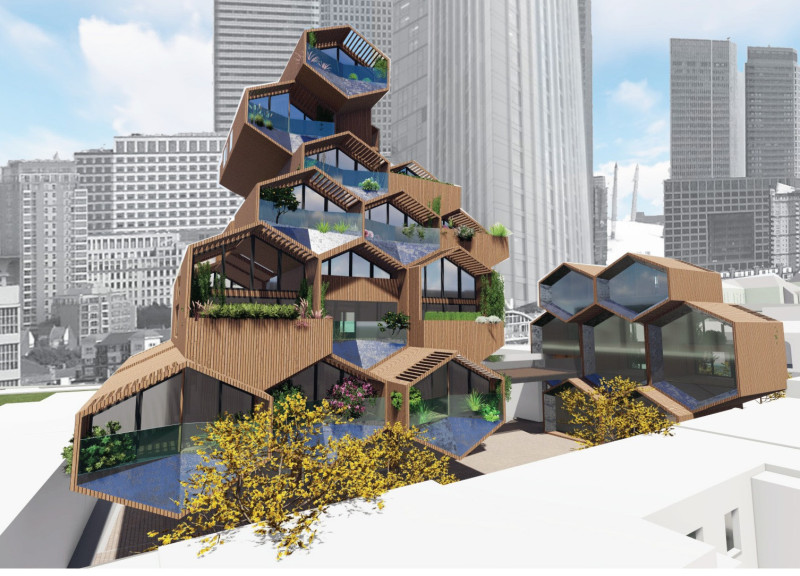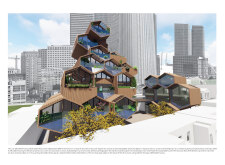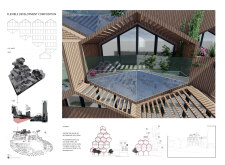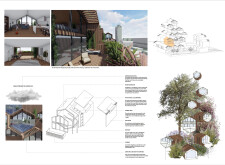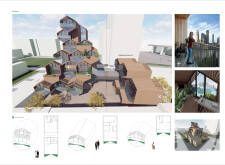5 key facts about this project
The project represents a shift away from conventional housing designs, focusing on modularity to allow for site-specific adaptation. The honeycomb configuration optimizes spatial efficiency, enhancing both light penetration and ventilation within the units. The primary objective is to create a livable environment that supports varying household sizes and promotes community interaction.
Sustainability is a core principle of this project. The selected materials include timber for structural elements, which offers environmental benefits, and glass for extensive natural light and views. Concrete is strategically used for foundational support and durability. The integration of green roofs and photovoltaic solar panels further emphasizes the project's commitment to reducing its environmental impact while encouraging biodiversity.
Designing for flexibility is one of the project’s significant aspects. The modular units can be prefabricated off-site, allowing for quicker assembly and reduced construction costs. This adaptability ensures that each unit can be tailored to meet local needs, which is crucial in a rapidly changing urban environment. Each living space is designed with consideration for communal engagement, featuring balconies and shared gardens that invite residents to cultivate a sense of community and sustainability.
The project’s architectural plans illustrate the thoughtful arrangement of living units and communal spaces. Detailed architectural sections help clarify how natural light and airflow will be maximized within the structure. The overall visual dynamics of the design reflect a contemporary approach to urban living, striking a balance between social interaction and private space.
Overall, this housing project sets a new standard for affordable housing initiatives in urban settings, highlighting the importance of sustainability, community, and flexibility. For those interested in exploring the finer details, including architectural plans, sections, and designs, further examination of this project presentation is encouraged. Engaging with the unique architectural ideas presented can provide insight into the innovative solutions offered by this design.


